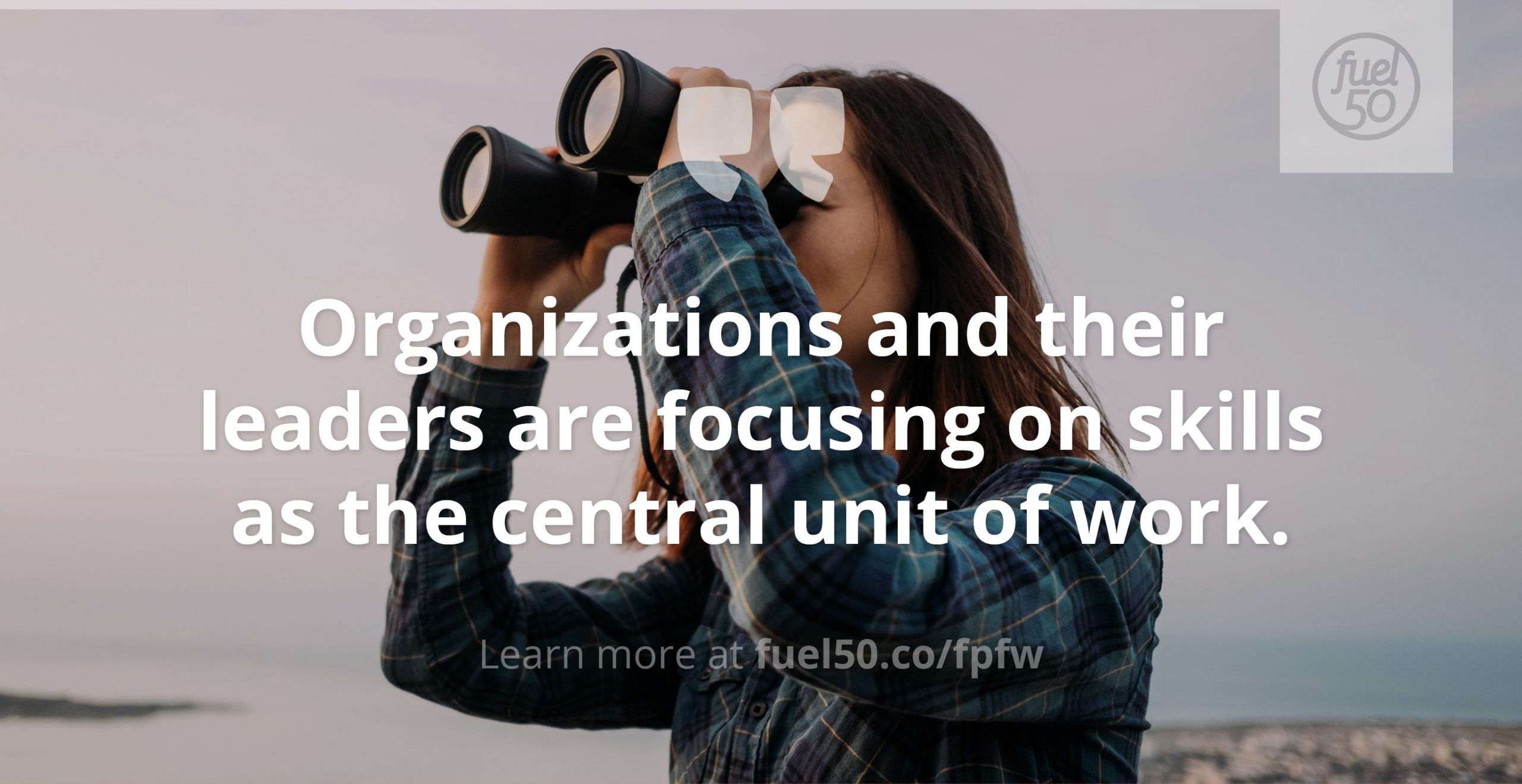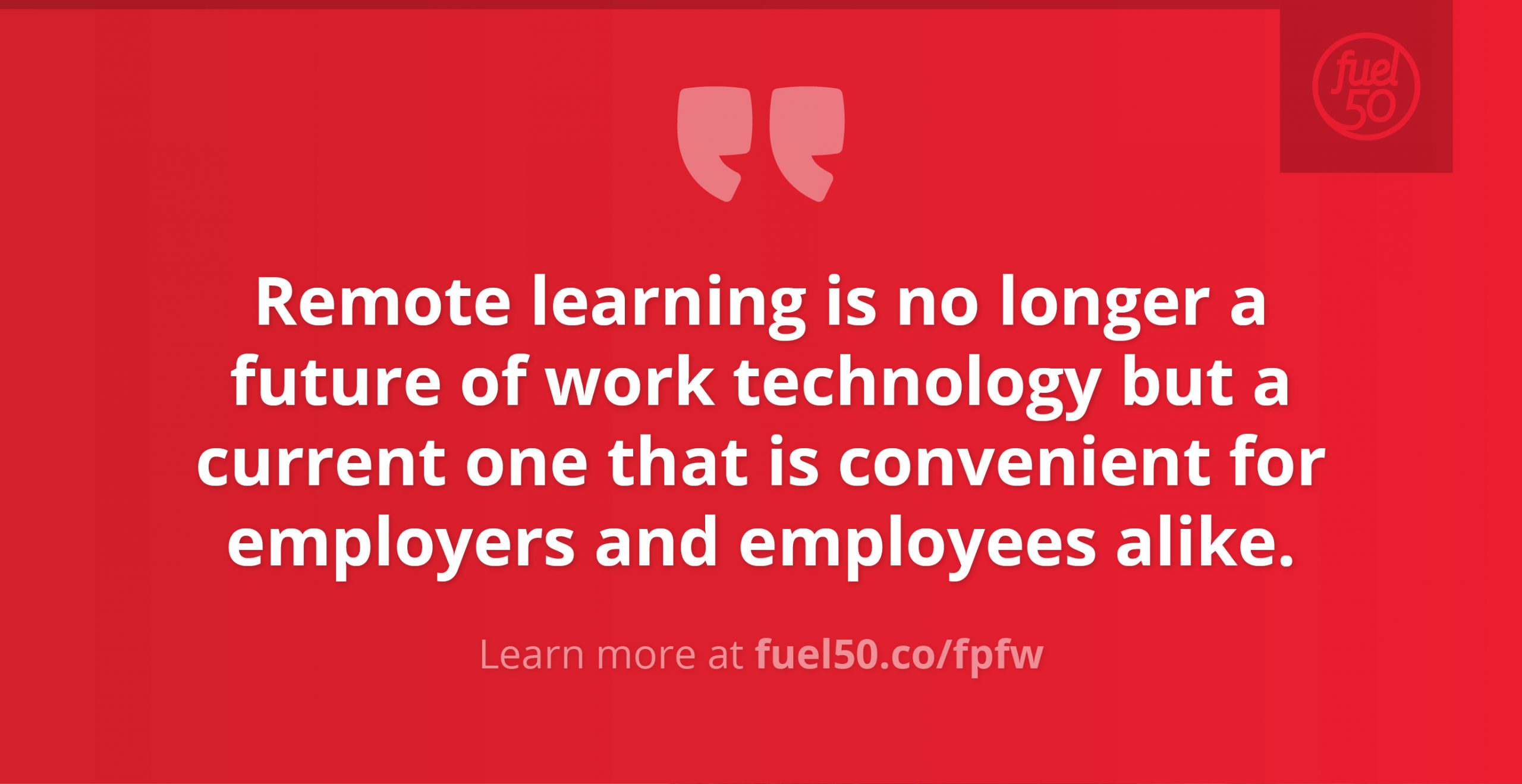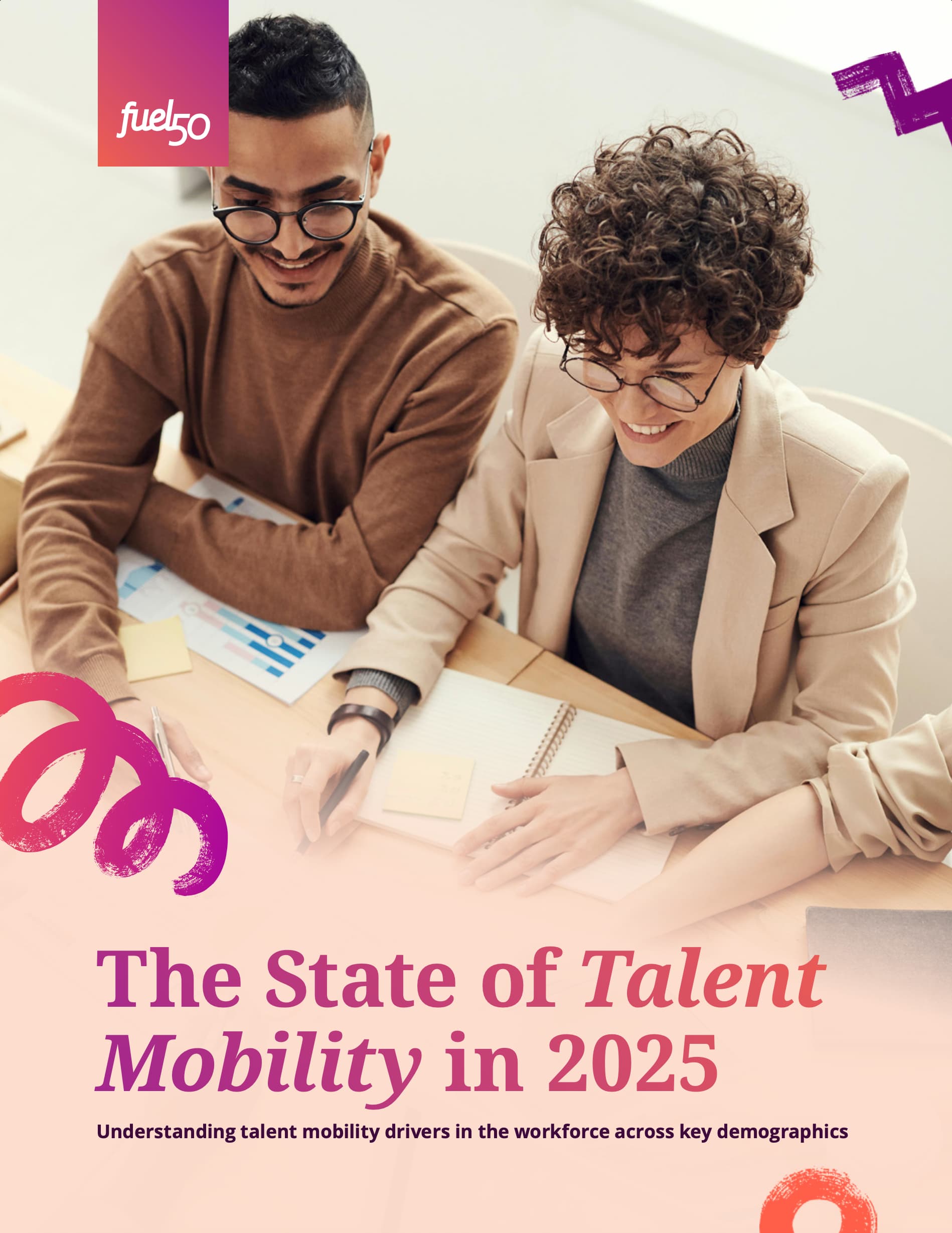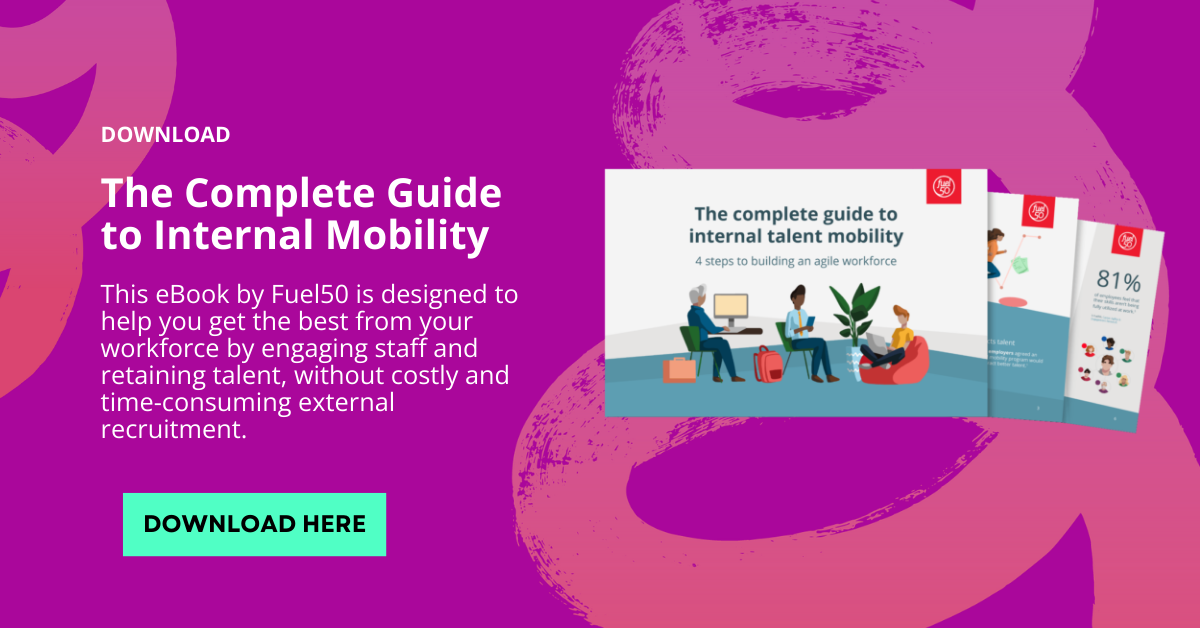It feels like yesterday that we said this about 2021, but Happy New Year! We hope you have a warm and prosperous 2022.
Global research firm Forrester had a similar message to our “Let’s Focus Forward,” but their focus was slightly different and well-worth considering. They said:
“2022 is a year to be bold. The old ways of working no longer work. The future is up for grabs. Leading firms will use the crucibles of 2020 and 2021 to forge a path to an agile, creative, and resilient tomorrow.”
These are words to remember as we get past the year-end celebrations and look to equip our organizations for this new year.
As we look forward to the year ahead, we expect that new challenges and unforeseen opportunities, many that are not even on our radar yet, will no doubt present themselves. But based on what we know now, we have gathered five predictions for 2022 that we believe organizations across the globe would be wise to consider.
Predictions for 2022 are both challenging and unpredictable. We will continue to struggle with COVID again this year, just as we have since early 2020, and accelerated change, juggling the challenges of remote/hybrid work, retaining top talent, and the “Great Return” will likely remain front of mind.
But new challenges and unforeseen opportunities, many that are not even on our radar yet, will no doubt also present themselves as we move ahead.
With that in mind, here are five predictions for 2022 that we think organizations across the globe would be wise to consider this year.
1. Skills are the new career currency.
Today, organizations and their leaders are focusing on skills as the central unit of work as work is deconstructed from the job level to the project level.
According to Fuel50’s Global Talent Mobility Best Practice Research, best-in-class organizations who are achieving the best business results and the best talent practice outcomes are also prioritizing the future of the workforce. They are championing borderless talent pools between internal and external talent markets and are facilitating project work. One Fuel50 client has approached it by their people no longer being defined by their job titles but by their project contributions.
In other words, the first of our predictions for 2022 is that workplace skills are changing — and workers need to change and develop new skills too if they are to grow and thrive moving ahead.
HBR made the case that how organizations evaluate the skill set of current and future employees will need to change as well:
“Evaluating employees and new hires based on their skillsets instead of their work history can help level the playing field — and help companies realize the talent they already have. It also makes talent pools more diverse and often makes hiring more effective.
This is the future of hiring and development. To get ahead of it, companies need to start weaving learning into their company cultures. Organizations slow on the uptake will be left behind and forced to deal with unsatisfied and unmotivated employees and significantly less innovation overall. At a time when talent is the number-one commodity in business, companies can’t afford to remain stuck in old mindsets.”

2. Employee wellbeing will remain a top business priority.
The COVID pandemic and subsequent disruptions have highlighted the need for organizations everywhere to put a greater emphasis on the health and wellbeing of employees.
In an American Psychological Association survey of 3,409 adults, nearly four out of five (78 percent) said the pandemic was a significant source of stress in their life, and that workers are experiencing burnout from the lack of separation between work and home, increased workloads, and anxiety over job security.
In another survey cited by The HR Digest, “about half of working adults globally say they have experienced increased anxiety around job security (56%), stress due to uncertainty in work routines (55%), and feel isolated working from home (49%) or have difficulty achieving a work-life balance (50%) as a result of the coronavirus crisis.”
The financial impact of employee stress is staggering, with the global cost of employees experiencing mental distress through lost productivity, absenteeism, and turnover is estimated to be around $2.5 trillion annually.
In 2022, companies will embrace the challenges of employee wellbeing and actively forge organizational cultures where employee health — both physical AND mental — is a critical priority. Businesses and organizations everywhere will work to share perspectives on the steps they are taking to support employee well-being at work.
A recent Harvard Business Review article listed some strategies to help cope with employee health and wellbeing, concluding with this important insight:
“Many management practices that improve worker well-being also benefit employers. That shouldn’t be surprising. In the long run, companies that care about their employees’ health and well-being will be more likely to have employees who care about the company’s health and well-being too. And that’s an outcome all good leaders want.”
3. Reskilling, Upskilling, and Ongoing Learning are essential for all.
Now more than ever, employees are looking for opportunities to grow their careers with help from their employers.
A competitive job market means that professionals must stay informed to advance their careers. Workers are calling for their employers to provide that education.
A 2019 LinkedIn Workplace Learning Report found that 94% of employees would stay at a job longer if employers provided training and development opportunities. Experts are predicting that, within the coming decades, the higher education system may shift towards long-term learning models. Instead of obtaining terminal degrees, future professionals may revisit college years after graduation to learn the latest skills and information.
Workplace learning trends are bound to follow suit. As remote work increases, so does virtual learning.
Remote learning is no longer a future of work technology but a current one that is convenient for employers and employees alike. Online modules and training videos ensure a consistent level of training for employees, and these self-guided courses allow staff to learn on their own schedules and paces. Digital courses are an easy way to bring continual education to the workforce.
An article in Forbes made this great point about the need for more effective training, learning, and reskilling:
“Eliminating skills gaps is a never-ending process, and as technology and automation become more fully integrated, those gaps will continue to appear. By fully engaging in a collaborative relationship with your workforce, you can pinpoint where your upskilling efforts will be most useful, and with better employee buy-in, you are likely to see more effective results as well.
Making reskilling your workforce a priority […] is a critical step to ensuring that your business will continue to grow, racing past those businesses that are going backward by standing still. You should see improvements in every metric when you work in full tandem with your workforce to develop training plans.”

4. Career Development is the Key to Employee Retention.
In the scramble to get past the pandemic and move towards the new normal, one big issue seems to get in the way: Your employees are being recruited by competitors, now more than ever.
The big question is simple: Are you doing enough to retain your employees?
Fuel50’s research on employee engagement and retention answered that question like this:
“The key to success in this increasingly competitive environment is to add value to your employees by tailoring work conditions to their individual needs, preferences, and talents.
At the same time, providing meaningful development opportunities allows employees to strengthen their ‘career capital’ and deepen their commitment to their role. This ensures a broad talent base with increased confidence and the ability to add value, as well as allowing you to build an organization where people want to work because they gain valuable skills and experience.”
An article in Forbes recently noted that employee retention is an often-overlooked measure of training, learning, and reskilling. They pointed to research by IBM that found that “employees are 42% more likely to remain with a company long term if they received training that helped them perform their work at a higher level.”
A big part of helping employees “perform their work at a higher level” is helping them to build their career path within your organization. Talent marketplaces are a great way to do that because they open more opportunities for people to take on new roles, learn new skills, and broaden their opportunities to progress through your organization.
And employees are happier, more productive, and build satisfaction when they KNOW the company they work for sees value in building the careers of their workforce to help the larger organization as well.
As The Harvard Business Review observed:
“The best way to stabilize your business is to stem the tsunami of attrition and increase your retention. In the frantic need to hire more people, the group we often forget to attend to are the folks who stay — those showing up day-in and day-out shouldering the work that needs to get done. Think about what these people — the ones who are here, working for and with you — need now. The short answer is they need to be seen for who they are and what they are contributing. It’s your job as the leader to make sure they’re getting the recognition they deserve.”
5. Coaching and better communication are critical.
The rise of remote work has dramatically increased the need for improved communication and collaboration tools for organizations worldwide. With work-from-home and hybrid workplaces here to stay, it is in every organization’s best interest to ensure that their employees have the right tools to collaborate and communicate effectively, regardless of where they are in the world.
For example, the rise of remote work has also forced many companies to move to a completely digital onboarding process.
While onboarding and coaching have traditionally been in-person interactions. Organizations now realize they need to invest in technology that facilitates coaching and onboarding in the digital workspace. Not only does investing in this technology make sure new employees have the support needed to hit the ground running, but it also provides current employees with an abundance of opportunities to grow their skillset.
But as the Harvard Business Review recently observed, “digital tools are only as effective as how effectively you use them, and alignment between managers and employees is critical to the success of any digital transformation initiative.”
They also noted that the rise in digital communication and coaching tools and technology will require a different way of thinking and managing as we move ahead. They added this advice… and warning:
“Leaders must lead by example and communicate that it’s okay not to respond to things in real-time, that it’s okay to decline meeting requests, that it’s okay to turn off notifications, and that it’s okay not to be online all day. Doing so will not only give people a fighting chance of addressing the chronic state of workplace stress and engagement worldwide but will also help them win the battle for talent, something that can only be good for the bottom line.”
One last thing to remember…
If there is just one thing that connects all these predictions, it’s this: flexibility will be the key to just about everything our organizations will be dealing with as this New Year moves ahead.
Organizational psychologist and futurist Dr. Adam Grant explained this last October in an essay for The Wall Street Journal titled The Real Meaning of Freedom at Work. He notes that “flexibility is now the fastest-rising job priority in the U.S.”, according to a poll of more than 5,000 LinkedIn members.
Dr. Grant also makes this important point:
“Flexible work is here to stay, but companies that resist it may not be. One of the biggest mistakes I saw companies make before Covid was failing to experiment with new forms of freedom. As employers contemplate a return to the workplace, a good place to start might be to ask people about the experiments they’ve run in the past year and a half and the ones they’d love to try moving forward. What old constraints should we try removing, and what new freedoms could we test?”
Our predictions for 2022 are rooted in Dr. Grant’s argument that flexibility is crucial and “flexible work is here to stay.” Flexibility has been a critical coping mechanism as we have struggled with the global lockdown and pandemic.
As the wheels were coming off in 2020-21, it was our resilience and flexibility that got us through to 2022. And if it was resilience and flexibility that got us here, it’ll be resilience and flexibility that continues to take us forwards as we strive for success this year. That’s our New Year’s wish for you.
How to Build an Agile Work Culture in Your Organization
Leave it to the global lockdown to help take agile work from an interesting idea to a rapidly growing business practice that’s being embraced by organizations everywhere. In other words, it’s the next big thing to help you build a better workforce. If you’re late to this, here’s what agile work is…








